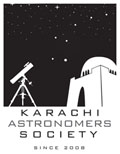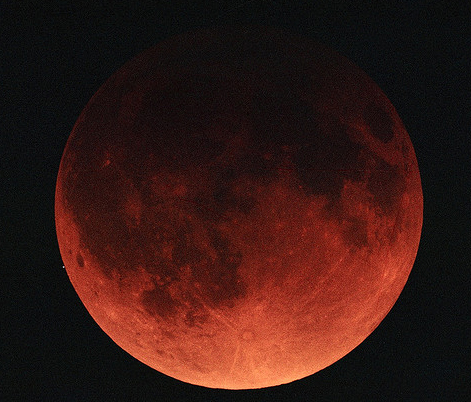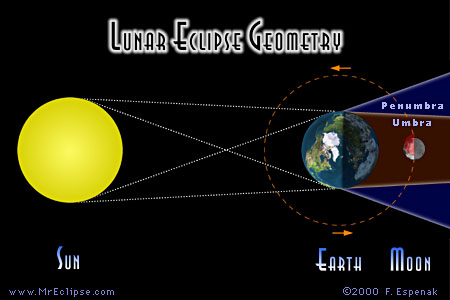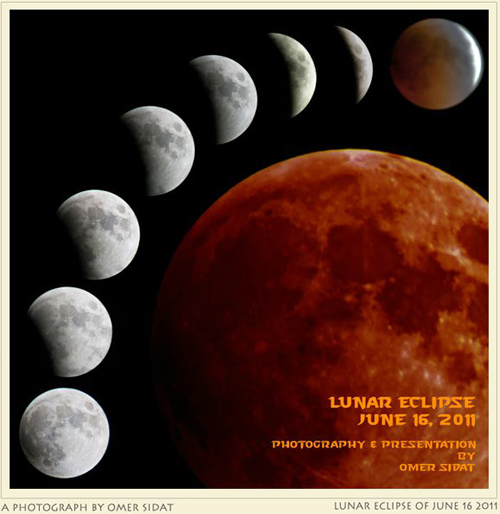Don’t See Lunar Eclipse or You Will be Blind – a Common Myth
You might have heard many people saying this: “Chand Girhan nahi dekhna warna indhay ho jaoge”. Many people believe this to be a fact, but in reality it is nothing more than just a myth.
We all know from primary classes that the Moon doesn’t have its own light. The light on the Moon is Sun’s light being reflected from the Moon and coming on the surface of Earth.
If you think logically, the Lunar Eclipse is an Eclipse when Moon becomes dark because of absence of Sun Light. If you see Moon in this condition when there is no direct Sun light falling on its surface, you have the answer. You cannot be blind because there is no light at all on the Moon. Even when there is no Eclipse of Moon (that is Lunar Eclipse), one can see Moon with unaided eye, binoculars, or a Telescope.
However, one can turn blind if exposed to direct Sun rays or powerful light.
We Pakistani’s are lucky to experience the 2nd Total Lunar Eclipse (Chaand Girhan) of this year 2011.
Lunar Eclipse of 10 Dec 2011
After the Lunar Eclipses of June 15th, 2011 our Earth is going to observe another Lunar Eclipse this year. The Lunar Eclipse will occur on 10th of December 2011 and will be a Total Lunar Eclipse. The Lunar Eclipse will start when the Moon rises just after the Sun will set. Total Lunar Eclipse is rare but fortunately this year, we are lucky to have the opportunity to watch the Lunar Eclipse twice and yes, from Pakistan.
On 20th Dec 2011 at the time of totality of Lunar Eclipse the Moon will be like somewhat like this:
Picture of a previous Total Lunar Eclipse..
(Courtesy Mr. Khalid Marwat)
What is Lunar Eclipse ?
A lunar eclipse is an eclipse which occurs whenever the moon passes behind the earth such that the earth blocks the sun’s rays from striking the moon. This can occur only when the Sun, Earth, and Moon are aligned exactly, or very closely so, with the Earth in the middle.
The red tone of the moon is due to the refracted rays of the Sun by the Earth. The temperature on Moon, at the time of Lunar Eclipse, reaches to -99o C. Below is an animation/ video of Lunar Eclipse Phenomenon.
Video: NASA LRO – Total Lunar Eclipse
There is a Full Moon every month, why Lunar Eclipse doesn’t happen every month?
As we pointed out that Lunar Eclipse occurs when the Full Moon is behind the Earth and the light on the Moon is blocked by the Earth and the Earth’ shadow falls on the Moon. You might be thinking that Full Moon passes behind Earth every month but then why Lunar Eclipse doesn’t occur every Month? This question leads us to understand the alignment of the Orbit of the Moon with the Earth. The orbit of the Moon with respect to Earth’s orbit is 5o tipped. So what happens is; the Moon’s orbit comes into alignment with Earth’s plane once or twice the year during the Full Moon. In other months, it is somewhat below or above the plane of the Earth. An animated video of this phenomenon will help understand easily.
Video: Total Lunar Eclipse – Reason & Frequency
Can we observe Lunar Eclipse?
The Total Lunar Eclipse on 10th of December, 2011 will be fully visible from all over Pakistan. We are so lucky. You can refer the image below taken from NASA website. It has lot of information like timings of totality in UT zone, the places on where the Eclipse will be visible.
Observing a Total Lunar Eclipse or a Partial Lunar Eclipse is safe and at the same time is enjoyable. You can see it with un-aided eye or a Binoculars or a Telescope.
The Details of the Eclipse on 10th of Dec 2011
The Lunar Eclipse starts with Penumbral Eclipse. Then Partial Eclipse and then the Totality begin when Moon is completely blocked by the Earth. The timings below are in Pakistan Standard Time (GMT+5)
Penumbral Eclipse Begins: 16:34
Partial Eclipse Begins: 17:46
Total Eclipse Begins: 19:06
Greatest Eclipse: 19:32
Total Eclipse Ends: 19:57
Partial Eclipse Ends: 21:18
Penumbral Eclipse Ends: 22:30
If you are interested in more details about the time and state of the Eclipse with time, an animation of the Lunar Eclipse to be happen on 10th December, 2011 can be found on this link.
You might be thinking what is Penumbral Lunar Eclipse and Partial Lunar Eclipse. Have a look at the below diagram:
Anatomy of Lunar Eclipse
(Source: http://astroprofspage.com/archives/1140)
Penumbral Lunar Eclipse
When the Moon passed into the Earth’s Penumbral Shadow, it is called penumbral Lunar Eclipse.
Partial Lunar Eclipse
When part of the Moon passed into the Earth’s Umbral Shadow, it is called a Partial Lunar Eclipse. The Lunar Eclipse of June 2012 will be a Partial Lunar Eclipse
Total Lunar Eclipse
When the Moon completely passed into the Earth’s Umbral Shadow, it is called Totality and the eclipse is called Total Lunar Eclipse.
During the Eclipse
Salat-ul-Qusoof
Salat-ul-Qusoof is often offered at the time of a Lunar Eclipse or a Solar Eclipse. The Eclipse will start just at the time of Maghrib, but to be in totality it will take an hour. Try to offer 2 rakat of Salat-ul-Qusoof during the time of Lunar Eclipse.
Observation (Naked Eye and/or Telescope and/or Binoculars)
Observing Lunar Eclipse is the Fun and an enjoyable aspect of Lunar Eclipse. You have to be at your house roof and look towards East at around 6:30pm. You will see the Full Moon. And bring your friends and family and explain them what is going to happen in next one hour. The Moon will go through all of its phases in one hour. Isn’t it great? If you are watching Lunar Eclipse for the first time, note that.
Observe Load Shedding on Moon
If you have a pair of Binoculars or a Telescope, enjoy the Eclipse with them. You don’t have to be afraid. The Moon will be dark. There will be no light on Moon. In other words, let’s say, Moon will have load shedding for an hour or so on 10th December, 2011.
Photography
We all love to keep memories and valuable moments. The Lunar Eclipse can be photographed. Grab a DSLR or any camera that you think can capture Moon, and then keep taking snaps of every phase of the Lunar Eclipse like the following photograph
This photograph was taken on 15/16 June 2011 Total Lunar Eclipse.
(Courtesy Omer Sidat )
Danjon Scale
What is Danjon Scale? The terminology looks too technical and something that tells it is some sort of scale. But what type of scale ? Danjon Scale is the measurement of the Luminosity of a Lunar Eclipse. It is denoted by letter ‘L’ and has 5 points in its measure. They are from 0-4. Check this link for explanation of Danjon Scale.
Conclusion
The Total Lunar Eclipse is an enjoyable phenomenon to observe and it is not at all harmful. The only thing I want to say to the readers is that:
Expressions of a person observing Lunar Eclipse
I was with my brother’s place at the time of Lunar Eclipse. We had set up the telescope just at Sun set. When the Moon was in Totality, one of the neighbour came to us upstaris and his experssions were
Mr. Asif: WOW! Superb!.
Me: Yea. Mashallah! I have been enjoying this since 6:00pm. Well you should have a look through this telescope.
Mr. Asif: Hmmm sure. (as soon as he had his first light without light on Moon). Oh My god! This is spectacular. (he looked at me and smiled) This is amazing.
Me: Yea. This is indeed!
Mr. Asif: Oh.. I can see the oceans.. I can clearly see the patches… (a moment after) I can see the whole Moon.
And this way it continues till half an hour…..
After the Eclipse
The TLE was observed by many enthusiasts. Some just enjoyed with naked eye, some used Binoculars and some Telescopes, some of them used Camera to take pictures of different stages of the eclipse. But some like me used naked-eye, Bino, Telescope and Camera. Thanks to Almighty. The sky was very clear in Karachi and the KaASians enjoyed the Eclipse at different places making small group of enthusiast. It was such a great eclipse that I cannot forget it. Perfect conditions, perfect time. :) This was the last Total Lunar Eclipse until 2018 that can be observed from Pakistan and neighbourhood. However, we will observe partial eclipse in the years between.
Some of the people whom I know personally and are KaAS members who love to photograph, have taken some amazing pictures which I will share soon.
Some Interesting Facts about Moon
- Moon is the only Natural Satellite of Earth (There are many other artificial satellites orbiting around the Earth. For example, geo-stationary satellites, ISS)
- Moon always faces one side towards Earth (Near Side)
- The Moon’s diameter is 3, 476km, just over a quarter of that of the Earth
- The apparent size of the Moon is equal is to the apparent size of Sun
- The Moon is the 5th largest natural satellite in the Solar System
- One orbit of Moon around Earth takes 27 days (Earth days) and 7 hours
- The rotational speed of Moon is equal to the rotational speed of Earth
- A Moon Day (Lunar Day) is the period of time it takes for the Moon to complete one full rotation on its axis with respect to the Sun, and it is the time it takes the Moon to make one complete orbit around the Earth and come back to the same phase
- Moon is responsible for the most of the high tides in oceans
- There are certain phenomena related to the Moon like Solar Eclipse, Lunar Eclipse, Moon Halo, and Moon Corona.
Related Articles
About the Author
The author Abubaker Siddiq Shekhani is a 25-year old amateur Astronomer obsessed by Moon since childhood. He is a Software Engineer by profession and loves to do adventures, travelling, observing nature and loves nature. This particular article is his one of the longest article among his other articles. He has written this article for the general public, beginners, amateur astronomers and for those who are aware of Lunar Eclipse but have questions in their minds about the science behind it.


.jpg)


